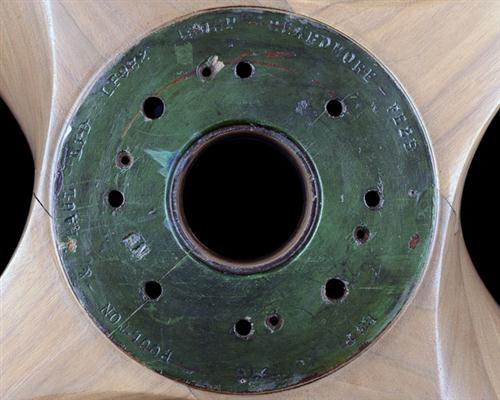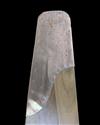Product Details
BOULTON & PAUL LTD.
A GREAT WAR ERA 9FT. DIAMETER LAMINATED FOUR-BLADE WOODEN AIRCRAFT PROPELLER,
of the type fitted to the F.E.2 pusher-type aeroplane, of multi-laminated pine construction with mitred central hub embossed 'BOULTON & PAUL LTD., LP982 160HP BEARDMORE FE2E B&P No. 3976', two original maker's plaques to the opposing blades and all four with copper sheathed tips, no apparent damage to leading edges (possibly an older restoration)
Provenance: The vendor acquired this Lot several years ago from the family of its original owner who worked at Boulton & Paul's Norwich works beside the River Wensum. It is possible that the propeller was never fitted to an aeroplane (there are no creep marks on the mounting holes and leading edges clean) but more likely that it is an old restoration.
The Royal Aircraft Factory F.E.2b entered service in 1915 and apart from the fact that it was a biplane, employing a pusher rather than tractor type power arrangement, was wholly different from its two previous namesakes. From the outset the F.E.2 was envisaged as a fighter and, by the standards of the day, was a well-armed and nimble aircraft that compared favourably with the German's Fokker Eindecker (monoplane). However, aviation development was moving forward at a furious pace and the type had become obsolete as a day fighter by the end of 1917.
The 160hp Beardmore, a development from the earlier 120hp version, was an inline six-cylinder, water-cooled aero engine used by many Great War era British aircraft (although ironically it was developed from an Austrian design). It was built by two firms for William Beardmore & Co. In all the firm supplied over 2,500 units which were well thought of, although it was noted that their serviceability was not as good as the earlier, lower-rated engine.
Other Notes: The history of Boulton & Paul can be traced back to 1797 when William Moore set-up an ironmongery business in Norwich. In the ensuing decades the company became general agricultural engineers and also made pre-fabricated iron buildings for rural use (and later fabricated the huts for Scott's expedition to the South Pole).
The firm's reputation was such that, as the threat of war grew, they were asked to build aircraft. The first of these, an F.E.2b flew from Mousehold Heath in 1915 and reached a top speed of 60mph.
Boulton & Paul also built many Sopwith Camels (28 per week at the height of production) as well as the major framework of the R.101 airship. The aviation arm of the company was sold in the 1930s and the Norwich site continued until the late 1980s when it closed.
Please click HERE to view Terms & Conditions.
Estimate £2,500-5,000






